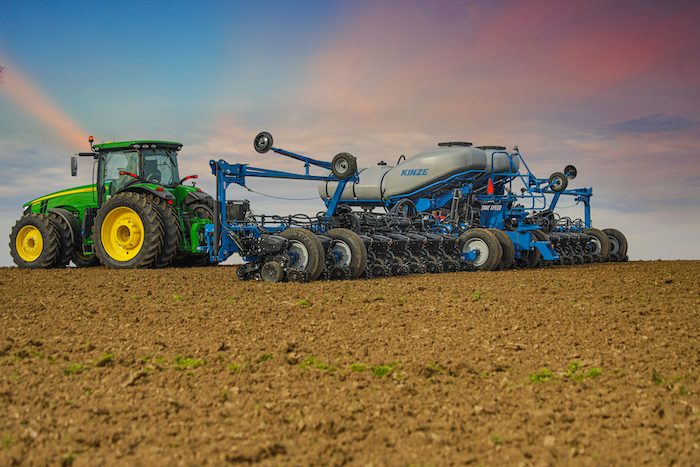Brand loyalty may be a thing of the past as new generations of farmers start to take over operations.
“We are seeing the workflow of farming going above and beyond just a piece of equipment that has an engine on it,” says Guillermo Perez-Iturbe, marketing director at Trimble.
Colorblind precision agriculture products, or brand agnostic products as Trimble refers to them, give dealers and customers flexibility, Perez-Iturbe says. Having a single platform that pulls data into a common cloud-based repository allows for integration of equipment of different colors and ages.
“Dealers don’t need to become experts in every single brand,” Perez-Iturbe says. “They can have one independent brand with the same UI (user interface) that brings forward the same value proposition, regardless of if it’s a 5-year-old piece of equipment or a 15-year-old piece of equipment.”
Aftermarket, brand agnostic equipment can make the transition to higher levels of precision agriculture easier for customers, too. Trimble’s interface, for example, stays the same, no matter what color of equipment it’s on. Trimble Connect allows customers to connect different brands of equipment into a Trimble solution via an API.
Perez-Iturbe says farmers are pushing for companies to make equipment compatible and providing useful information about what they need their connected equipment to do.
“They have years of data in some cases that they need to utilize to make decisions moving forward, share with their agronomist or use for regulatory compliance reporting,” Perez-Iturbe says.
A customer-centric strategy is key for selling precision products as farmer preferences are changing. Some farmers may be loyal to one brand, while others are looking beyond the color of the equipment to the value it brings.
To sell a farmer who’s used to using only one brand of equipment on a colorblind alternative, the first step is to identify the customer’s challenge on the farm. Then, focus on the value the alternative would bring to the table and the compatibility it offers for equipment of all ages. Dealers may also offer training to get the customer comfortable with using the new software and demonstrate its benefits.
Perez-Iturbe says dealers should look at brand agnostic technology as supporting their customers’ workflow of farming. A farmer with a red combine, green tractor and yellow sprayer likely has to learn three different technologies, train multiple people on using those three systems and exchange data with three different platforms.
“By moving into a Trimble ecosystem, all of those nuances go down to zero because it's the same user interface on a tractor, on a sprayer, on a combine,” Perez-Iturbe says. “It makes it much simpler for the end user. It makes it much simpler as well for the reseller to support a customer.”
Making technology simple and easy to use for resellers, operators and farmers is at the heart of Trimble’s global strategy.
“Since the very beginning of Trimble, we were looking at a brand agnostic and flexible scenario for the end-user, so you don't sacrifice the technology that you use based upon the equipment brand that you bought,” Perez-Iturbe says.
Related Content
Putting a Colorblind Mentality to Work for Precision Efficiency: With customers operating a variety of equipment brands, Eric Hagenow, precision farming specialist with Eis Implement, stresses the importance of having a broad knowledge base when it comes to technology, especially during the busiest times of year.
Taking a Colorblind Approach to Precision Guidance: At a time when technology vendors in other areas are talking about openness and interoperability, there are those in the agricultural industry that want to protect their proprietary rights.
[Podcast] A Colorblind Approach to Solving Compatibility Problems: Even as the ag industry inches toward improved functionality across equipment brands, the ability to mix and match precision components is essential to improving farm customers’ machinery performance and productivity.







